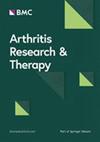类风湿关节炎和肾结石之间的关系:NHANES 2007-2020的横断面研究
IF 4.6
2区 医学
Q1 Medicine
引用次数: 0
摘要
肾结石(KS)和类风湿关节炎(RA)是常见疾病,但它们之间的关系尚不清楚。我们的研究旨在调查RA和KS之间的可能联系。本研究调查了RA和KS患病率之间的关系,并使用了2007年至2020年国家健康和营养检查调查(NHANES)的数据。RA和KS的诊断通过有效的问卷进行自我报告。采用加权logistic回归评估RA与KS之间的独立相关性(调整年龄、性别、种族、教育水平、PIR、婚姻状况、吸烟状况、酒精状况、BMI、糖尿病、高血压、总能量摄入、总饮水量、Scr、BUN、总胆固醇、甘油三酯、HDL、血清尿酸)。此外,我们进行了亚组分析和相互作用评估,以确保这些结果的稳健性和可靠性。该研究纳入了19,904名参与者(≥20岁),其中包括1,477名RA患者。RA组KS发生率(17.009% vs. 8.123%, p < 0.001)高于非RA组。校正所有协变量后,我们发现RA和KS呈正相关(OR = 1.770, 95% CI: 1.418-2.209)。此外,RA和KS之间的强相关性在所有分层亚组分析中持续存在。在美国的成年人中,RA与KS的高患病率显著相关。然而,横截面设计限制了因果推理。在未来,需要进一步的研究来证实这种联系。本文章由计算机程序翻译,如有差异,请以英文原文为准。
Association between rheumatoid arthritis and kidney stones: A cross-sectional study of NHANES 2007–2020
Kidney stones (KS) and Rheumatoid arthritis (RA) are common diseases, but their association remains unclear. Our research aims to investigate a possible link between RA and KS. This study investigates the relationship between RA and KS prevalence and uses data from the National Health and Nutrition Examination Survey (NHANES) from 2007 to 2020. RA and KS diagnoses were self-reported via validated questionnaires. Weighted logistic regression was used to assess the independent associations between RA and KS (adjustments for age, sex, race, education level, PIR, marital status, smoke status, alcohol status, BMI, diabetes, hypertension, total energy intake, total water intake, Scr, BUN, total cholesterol, triglycerides, HDL, serum uric acid). Moreover, we executed subgroup analyses and interaction assessments to ensure the robustness and reliability of these results. 19,904 participants (≥ 20 years) were included in the study, including 1,477 RA patients. The rate of KS (17.009% vs. 8.123%, p < 0.001) in the RA group was higher than that in the non-RA group. After correcting for all covariates, we found a positive association between RA and KS (OR = 1.770, 95% CI: 1.418–2.209). In addition, a strong correlation between RA and KS persisted across all stratified subgroup analyses. In adults in the United States, RA was significantly associated with higher KS prevalence. Nevertheless, the cross-sectional design restricts causal inference. In the future, additional research is required to confirm this association.
求助全文
通过发布文献求助,成功后即可免费获取论文全文。
去求助
来源期刊

Arthritis Research & Therapy
RHEUMATOLOGY-
CiteScore
8.60
自引率
2.00%
发文量
261
审稿时长
14 weeks
期刊介绍:
Established in 1999, Arthritis Research and Therapy is an international, open access, peer-reviewed journal, publishing original articles in the area of musculoskeletal research and therapy as well as, reviews, commentaries and reports. A major focus of the journal is on the immunologic processes leading to inflammation, damage and repair as they relate to autoimmune rheumatic and musculoskeletal conditions, and which inform the translation of this knowledge into advances in clinical care. Original basic, translational and clinical research is considered for publication along with results of early and late phase therapeutic trials, especially as they pertain to the underpinning science that informs clinical observations in interventional studies.
 求助内容:
求助内容: 应助结果提醒方式:
应助结果提醒方式:


